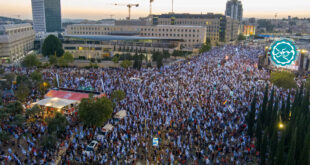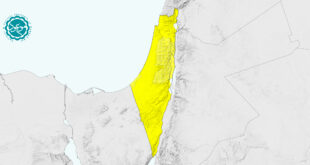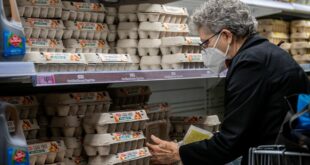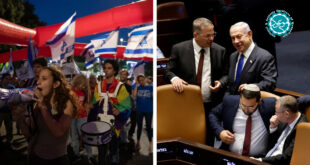According to Mouood, quoting by irdc.ir:
The structure of the Zionist regime’s torture of Palestinian children
The arrest, torture, and imprisonment of innocent Palestinian children are part of the Zionist child-killing regime’s plans. The three main levers of the network (Israel Security Agency), the police, and the intelligence service of the Israeli army are working to interrogate the detainees of Palestinian children in Israel.
Almost all children, without exception, go under one or more than one form of torture, such as; beatings, deprivation of food and drink, exposure to intolerable temperatures, lack of access to health services, sleep deprivation, and so on. The torment inflicted on Palestinian children must be seen in the context of governmental torture. Carrying out these methods of torture is a conscious decision by the Zionist regime, a decision taken in line with their overall strategy to weaken any real or potential resistance to the occupation.
The infanticide Zionist regime, despite being a member of the United Nations and subjecting itself to international organizations and conventions on human rights, has committed the most heinous crimes against the defenseless Palestinian nation and has proved that under no circumstances will not adhere to any international law, organizations or conventions.
However, the most inhumane occurrence here is the Zionist regime’s behavior towards Palestinian children. The regime regularly commits unforgivable and blatant violations of internationally recognized human rights standards during the detention and interrogation of Palestinian children. Three main levers are in charge of Palestinian child detainees’ interrogation in Israel:
Shabak (Israel Security Agency): Shabak is a semi-independent organization within the government that reports straightly to the Prime Minister. Shabak usually oversees interrogations by other Israeli agencies and directly interrogates major crimes and political activists.
This network constantly uses all kinds of torture; mental and painful physical torture. When children confess to a crime, the “Shabak” refers them to the police to repeat their confession there, but if the child refuses to do so, he or she is sent back to “Shabak” for further interrogation.
Police: Israeli police, run by the Ministry of Internal Security, deal with a large proportion of child detainees facing smaller charges. Although police officers conduct interrogations, network agents oversee the interrogation process. Torture is very common in these situations.
Army intelligence: The intelligence service of the Israeli army, which is administered by the Ministry of Defense Security, is known for its use of brutal physical methods, such as severe beatings, burning with cigarettes, and other painful physical tortures. During these processes, “Shabak” forces are involved here again.
This provides legal cover for interrogations, as the court only accepts confessions signed in the presence of police officers. If a child avoids repeating his or her confession to police officers, he or she will be returned to the intelligence unit of the army for further questioning. Almost all children, without exception, have been subjected to one or more cases of torture(we have documents to back it up), which will be described below.
Beatings: Israeli military personnel and police officers beat children on all parts of the body, especially the head and genitals, this starts from the time they get arrested until they enter prison. This beating may be done with fists, cables, guns, batons, and even pieces of table and chairs. Most beatings occur when a prisoner is transferred from or to detention centers or transferred to other locations; not forget to mention that these tortures happen during interrogation as well.
Detainees are often blindfolded and unable to see anything during the beatings. Until the Israeli Supreme Court rule in 1999 to ban certain forms of torture, adult prisoners were completely covered with thick sacks. The bags were usually covered in sweat, vomit, urine, or feces; some adult detainees reported that soldiers would throw the bag in the wet area of the bathroom, forcing them to pull the bag over their heads.
In many cases, the same thing has been done with child detainees. Since the issuance of the 1999 decree, most detainees have had their eyes closed with special clothes or spectacles, which have been used to hurt them due to the heaviness of it on their heads.
Mass interrogation: Sometimes more than one interrogator participates in the questioning of children to give the child the feeling that he or she is surrounded by a group of armed soldiers or police.
Ban on family visits: Israel puts more pressure on children to prevent inmates from having any contact with their family members, to create more isolation.
Prohibition of receiving any legal advice: This not only contributes to the process of the child’s psychological isolation but also prevents any outside witnesses from observing the abuse and its consequences.
Food and drink deprivation: Very little food and drink are given to detainees, sometimes they are not given anything to eat at all. Their food is sometimes incredibly unknown.
Holding a detainee to unbearable temperatures: Detainees are often left outdoors for long periods. Sometimes they even take their clothes off. This type of torture was particularly prevalent during mass arrests in 2002 when the weather was extremely cold and humid. Prisoner abuse was often exacerbated by other forms of torture, such as deprivation of food or a ban on access to toilets. Mustafa Akkawi, a 35-year-old detainee, froze to death in 1992 after being released into the snow and outdoors.
He was also beaten before his death, covered his head with a bag, and deprived of sleep. Furthermore, the form of torture associated with this method is the constant pouring of hot and cold water on children during interrogation. Cold water is used in winter and hot water in summer.
Holding a detainee in degrading situations: spitting on prisoned children’s bodies, causing them severe physical stress, forcing them to take off their clothes, plus forcing them to curse Allah or their relatives are all common examples of these types of torture.
The compulsory signing of confessions: Children are forced to sign a confession form written in Hebrew, a language they do not understand, as they face severe torture and intimidation. Authorities often lie to children about the actual content of the confession and force them to do so by promising them freedom in exchange for signing the form.
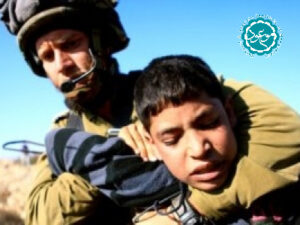
Isolation: Children are usually confined for a long time in solitary unit rooms measuring two meters by two meters with a very small window or ventilator. The “open” toilet inside the cell emits a fake odor. The child is not allowed to communicate with anyone while spending time in this cell. The floor is usually wet or has sewage passing through the cell floor. Furthermore, the cell lighting may be either completely dark or very bright.
Lack of access to toilets: Detainees are often barred from using toilets and forced to do their work in front of other detainees while fully clothed. Sometimes the time allowed to use the toilets is limited. Detainees experience a sense of helplessness when they see these restrictions and the fact that even their physical functions are in the hands of the Israeli police force or army will cause even more damage to their wellbeing.
Torture using the detainee’s physical position (specter): This type of torture is typically brutal, forcing a detainee to be in a difficult and painful physical position for long periods. These forms of torture may include tying a detainee’s hand to a chair or tube in a painful position, forcing him or her to stand on tiptoe for long periods, or even standing in front of a wall for hours. There is no escape from this pain and suffering, because the torturer, ” specter “, leaves very little trace of the torture on the body of the detainee.
Pressure to cooperate with Israeli security services: Israeli authorities, force them to cooperate with security agencies, often threaten them with more punitive measures, or transfer them to cells where “collaborators of security agencies” were held, so they can put the child under pressure to cooperate with the forces.
Shaking: This torture is done by shaking the child to the point of unconsciousness. This clear form of torture can be fatal. This was supposed to be outlawed by the Supreme Court in September 1999, but there is evidence that the torture is still used against some adults, and has been used against children in the past as well.
Sleep deprivation: Soldiers or police do not allow detained children to sleep by constantly waking children up, playing loud music, or placing strong lights in their cells. This type of torture is physically and mentally crushing.
Threats: Soldiers threaten children with long prison sentences; they threaten to imprison their family members, destroy their homes, rape them or intimidate their relatives.
In interviews with a member of the Palestine Division of the International Organization for the Protection of Children (ICRC); with 50 children arrested and detained by Israelis from 1999-to 2000, all children stated that they had been subjected to some form of torture during their detention. Half of them still had scars from their detention and torture or reported bodily injuries during the torment.

Almost all of them had their hands and eyes closed at the time of their arrest and interrogation. Other studies confirm this fact. A few years before the Intifada began, Betselm estimated that 85% of all Palestinian detainees were tortured during their captivity. A series of in-depth interviews that were conducted in 1994 with 60 released prisoners in the Bethlehem area showed that 85% of them had been tortured during interrogation.
This type of behavior and pressure is designed to intimidate the child so much that he or she will eventually confess to crimes that he or she may not have committed at all. During this process, the children are alone, have no contact with the outside world, and are interrogated by Israeli armed soldiers, police, or “Shabak” agents in a completely alienated environment. The methods used against them, and their vulnerability in these situations, are the basis of their attack and are designed and calculated in such a way that the child is physically exhausted and then is overcome with fear.
The pattern of ill-treatment and torture perpetrated by various branches of the Israeli government is clear and to a large extent, the same has been said in all the testimonies provided by international, Israeli, or Palestinian human rights organizations’ previous detainees. In this pattern of Israeli torment, there are violent methods of torture alongside tactics designed to bring pressure and stress to the arrested.
If we look at all of these behaviors separately, some specific actions are unlikely to seem like torture at all. But when all of them are done in their entirety, together, and lead to the physical and mental exhaustion of the child, we see that we are facing complete torture.
The torture inflicted on Palestinian children must be seen in the context of governmental torture. The use of these methods of torment is a deliberate decision by the Israeli government, a decision taken in line with their overall strategy to undermine any real or potential resistance to the occupation. These methods do not target the individual Palestinians individually, but rather targets the integrity of Palestinian society.
Source: Katherine Cook, A Plundered Child (Israeli Zionist Policies for the Imprisonment of Palestinian Children), Translator: Saeb Karimi, Islamic Revolutionary Documentation Center.
 Mouood Mouood English Edition
Mouood Mouood English Edition

